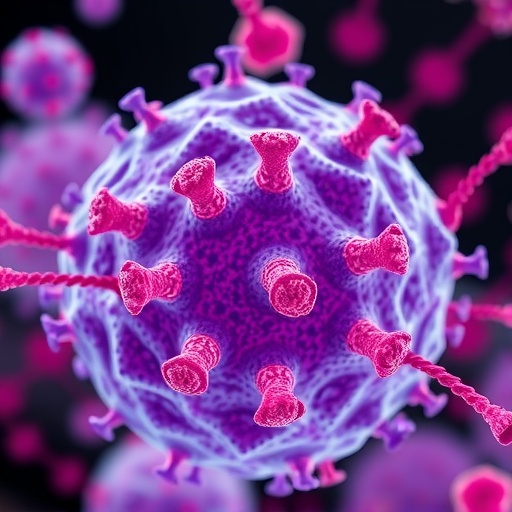
Hepatocellular carcinoma (HCC), a primary malignancy of the liver, continues to be a formidable challenge in oncology, especially when induced by chronic hepatitis B virus (HBV) infection. Surgical resection remains one of the definitive curative treatments, yet predicting patient outcomes after this intervention has long been a clinical priority. In a groundbreaking study published in BMC Cancer, researchers have offered compelling evidence that the platelet-albumin-bilirubin (PALBI) score surpasses the traditional albumin-bilirubin (ALBI) grade in prognosticating long-term survival for hepatitis B-associated HCC patients following hepatic resection.
The assessment of liver function and injury severity plays a pivotal role in clinical decision making for HCC. Historically, the Child–Pugh (CP) score has been the standard for grading hepatic dysfunction but is limited by subjective parameters and interobserver variability. In recent years, the ALBI grade, which relies on objective biochemical markers—serum albumin and bilirubin—has emerged as a refined tool. Yet, ALBI does not account for platelet counts, which reflect portal hypertension and liver fibrosis severity, critical determinants in HCC progression.
Addressing these limitations, the PALBI grade integrates platelet counts alongside albumin and bilirubin, theoretically providing a more comprehensive evaluation of hepatic reserve and disease severity. The extensive retrospective cohort study led by Yang et al. leveraged data from 1,005 patients with hepatitis B-induced HCC who underwent curative liver resection between 2013 and 2023. This sizable dataset provides robust statistical power and clinical relevance, enabling a head-to-head comparison of PALBI and ALBI scores regarding their predictive accuracy in long-term survival outcomes.
One of the most striking findings of this research is the superior discriminative power of the PALBI score as indicated by the area under the receiver operating characteristic curve (AUC). PALBI demonstrated an AUC of 0.618 in predicting overall survival (OS), markedly surpassing the ALBI score’s AUC of 0.522. Although both scores were statistically significant predictors, this increased precision suggests that PALBI can more accurately stratify patients into prognostic categories, a vital aspect for tailoring individualized treatment strategies.
In multivariate analyses that adjusted for potential confounders, both ALBI and PALBI grades remained independent prognostic factors for overall survival. However, PALBI’s tighter confidence interval and stronger p-value underscore its robustness as a predictive biomarker. Interestingly, when disease-free survival (DFS) was considered, only PALBI showed significant association, highlighting its practical clinical implication in anticipating tumor recurrence post-resection.
The study further dissected survival outcomes within subgroups assigned by the Barcelona Clinic Liver Cancer (BCLC) staging system, a widely used clinical framework to guide HCC management. Here, PALBI demonstrated remarkable granularity by effectively segregating patients into three distinct prognostic groups across different BCLC stages, an advancement ALBI failed to replicate. This enhanced stratification capability emphasizes that PALBI could refine clinical staging by incorporating biochemical and hematological variables, potentially influencing post-surgical surveillance and adjuvant therapy decisions.
This research also sheds light on the underlying pathophysiology captured by the PALBI score. Platelets play multifaceted roles in liver disease, contributing not only to hemostasis but also to fibrogenesis and tumor biology. Their inclusion in the prognostic model aligns with emerging evidence linking thrombocytopenia to portal hypertension severity and poorer hepatic function, both of which are critical determinants of HCC prognosis.
Furthermore, the PALBI score’s reliance solely on routine laboratory tests leverages its accessibility and cost-effectiveness in diverse clinical settings, including resource-limited regions where HBV prevalence is high. This practicality, paired with enhanced prognostic accuracy, points toward PALBI’s potential for widespread adoption in clinical algorithms related to liver cancer management.
Notably, the study’s large sample size spanning a decade offers longitudinal insight, making the findings applicable to evolving clinical practices and demographic changes in HBV-related HCC patient populations. It highlights the dynamic nature of liver cancer prognosis, where integrating multifactorial biochemical markers can refine predictions and improve personalized care.
These findings challenge clinicians and researchers to re-evaluate established liver function assessments for HCC patients. While the ALBI grade has been endorsed for its objectivity and simplicity, PALBI introduces an additional dimension, bridging hematological indicators with hepatic synthetic function to render a more nuanced prognosis.
The implications for future research are compelling, inviting prospective validation studies and exploration into PALBI’s role in other etiologies of liver cancer such as hepatitis C virus (HCV) infection or non-alcoholic fatty liver disease (NAFLD). Moreover, integrating PALBI with imaging biomarkers and molecular profiling could pave the way for multi-modal prognostic models that encapsulate tumor biology, hepatic reserve, and systemic inflammatory status.
In conclusion, this comprehensive analysis marks a significant advancement in risk stratification tools for hepatitis B-induced HCC post-resection. The PALBI grade’s superior prognostic performance over ALBI offers clinicians a more accurate, accessible, and clinically meaningful means of forecasting long-term outcomes, ultimately guiding therapeutic choices and surveillance protocols. As the global burden of HBV-related HCC continues, such refinements in predictive modeling will be integral to enhancing survival and quality of life for affected patients.
The translation of these findings into clinical practice not only promises to improve individualized prognostication but also underscores the importance of integrating hematological parameters into hepatic function assessments. Future guidelines for managing HBV-associated HCC may well incorporate PALBI scoring as a standard prognostic indicator, reflecting a paradigm shift rooted in robust, evidence-based medicine.
This study exemplifies how rethinking established indices by including multidimensional patient data can unravel new prognostic insights. With broader validation and incorporation into clinical workflows, PALBI has the potential to transform how clinicians assess risk, tailor treatments, and ultimately improve outcomes for one of the world’s most challenging cancers.
Subject of Research: Prognostic scoring systems for long-term survival in hepatitis B-induced hepatocellular carcinoma after hepatic resection.
Article Title: Platelet-albumin-bilirubin versus albumin–bilirubin as a predictor of long-term survival for hepatitis B-Induced hepatocellular carcinoma after hepatic resection.
Article References:
Yang, H., Shen, S., Yang, Y. et al. Platelet-albumin-bilirubin versus albumin–bilirubin as a predictor of long-term survival for hepatitis B-Induced hepatocellular carcinoma after hepatic resection. BMC Cancer 25, 855 (2025). https://doi.org/10.1186/s12885-025-14240-7
Image Credits: Scienmag.com
DOI: https://doi.org/10.1186/s12885-025-14240-7
Tags: albumin-bilirubin grade comparisonchronic hepatitis B infectionclinical decision-making in oncologyhepatitis B liver cancer survivalHepatocellular carcinoma prognosisHepatocellular carcinoma treatment strategiesliver dysfunction gradingliver function assessmentplatelet-albumin-bilirubin scoreportal hypertension and liver fibrosisretrospective cohort study in cancersurgical resection outcomes





